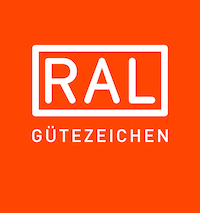Labels only fulfil their purpose if people are able to rely on the fact that the criteria for the award of these labels correspond to the latest technology, current standards, legal regulations and developments on the market. The requirements for the award of RAL Quality Marks – the Quality Assurance and Test Specifications – are continuously examined for this purpose. In the event of a new development, the specifications are amended as part of a revision or extension. As is the case when creating a new RAL Quality Mark, the process for updating or extending existing Quality Assurance and Test Specifications also ensures the up-to-dateness of the criteria. The independence of RAL and the involvement of relevant authorities, associations and testing institutions guarantee that this is the case. The following recent examples clearly demonstrate how important it is to continuously amend the Quality Assurance and Test Specifications.
Amending the specifications to take account of technological developments
Plastic windows are known for their durability, easy maintenance and resistance to, for example, the weather. The RAL Quality Mark for Plastic Window Profile Systems indicates to consumers that all of the components – from the seals and surface coatings though to the glass – meet the highest requirements. It also ensures that the materials are harmless to people’s health. In the most recent update to the Quality Assurance and Test Specifications, the requirements were amended to take into account the latest technological developments. New rules were introduced for, amongst other things, the use of volatile organic substances (VOC) in order to prevent any impact on human health in indoor rooms.
Amending the specifications to meet the requirements of individual target groups
The external catering market is becoming increasingly important. This is true in canteens, senior citizen facilities and child day-care centres, as well as in schools where lunch is now being offered to pupils to an increasing extent. Suppliers not only have to satisfy the tastes of different people when preparing the food but also have to take into account the very different nutritional requirements of their customers. Since the early 1960s, the RAL Quality Mark for Expertise in Eating Properly has stood for particularly high quality and regularly inspected outside catering. During this time, the specifications have been continuously amended to take account of new knowledge about nutrition and meet the requirements of new target groups. For example, the last update focussed on customers in rehabilitation clinics, schools and catering companies.
Amending the specifications to take account of market developments
RAL Quality Marks often give their users a competitive advantage by focussing on the reliable quality of the products and services. To ensure that this advantage is maintained, the award criteria also have to be amended to take account of changing requirements on the market or amongst consumers. One example is the bus and coach sector. The RAL Quality Mark for Bus Comfort has three classifications with a three, four or five star rating. These ratings enable passengers to judge the quality of the facilities provided in the relevant bus. As part of the latest update, the award criteria were amended to take account of the greater demand amongst passengers for optional equipment. If the buses or coaches are fitted with individual extras that raise their quality above the level of the previous three, four or five star rating, they are able to indicate this using the additional term “superior”.


